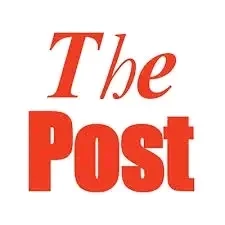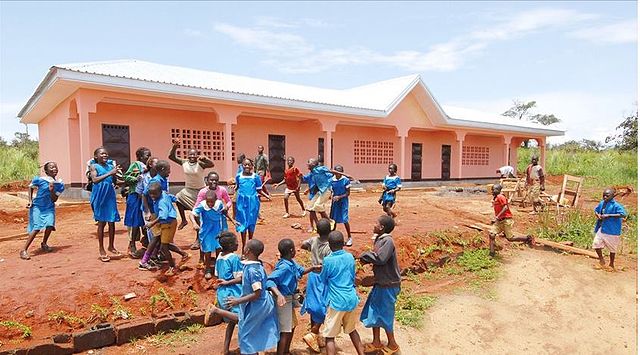Education has certainly evolved in the past 43 years under the New Deal Regime of the Cameroon People’s Democratic Movement, CPDM headed by its Chairman and President of the Republic, Paul Biya. Even though the general trend in terms of creation of schools and liberalisation of the education sector is positive, the challenges to meet up with the global education exigencies have been daunting.
Digitalisation Gaining Grounds In Higher Education
When the New Deal Government took over power on November 6, 1982, the lone state university was that of Yaounde. Therefore, evolution in the higher education sector started with the university reform of 1993 that saw the creation of six state universities notably those of Buea, Douala, Dschang, Ngaoundere, Yaounde I and Yaounde II.
In 2008, a presidential decree created the University of Maroua that took off with Higher Teacher’s Training College, ENS. This was followed in 2010 by the creation of the University of Bamenda and on January 5, 2022; the universities of Bertoua, Garoua and Ebolowa were created by President Paul Biya giving a total of 11 state universities.
Within the same time frame of 43 years coupled with increasing demand for higher education studies, the New Deal Government equally eased the creation and opening of private higher institutions of learning. According to information provided by the Communication Unit of the Ministry of Higher Education, MINESUP; Cameroon today counts over 410 private higher institutions of learning spread over the 10 regions of the country. In addition, more than 1622 public and private professional training centres are functional in Cameroon.
Thanks to international cooperation between Cameroon and the Pan African University, the Rectorate of the institution is today based in Yaounde. Within the confines of that university, young Africans are trained in Cameroon as well as in other African countries. Still in line with international cooperation, the Congo-Cameroon Inter-State University was constructed in Sangmelima, South Region, for the first phase, while the second phase will see the construction of the Ouesso-Congo campus. The Limbe-based African Institute of Mathematical Science (AIMS) in the Southwest Region is also one of the fruits of international cooperation engaged by Cameroon through MINESUP.
Digitalisation under the framework of 3rd Generation Universities, coupled with the institution of the New University Governance programme geared at the transformation of Cameroonian universities to meet up with global higher education challenges, has been one of the preoccupations of MINESUP. And the first step to achieve this was the putting in place of the E-National Higher Education Network that saw the acquisition and distribution of some 500,000 Paul Biya Higher Education Vision laptops to state and private university students. However, the durability and performance of the said laptops is entirely another story.
The second step in promoting the 3rd Generation University Vision was the construction and equipment of Digital University Development Centres. With the exception of the Universities of Bertoua, Garoua and Ebolowa, created recently, the centres in the other eight state universities as well as that of the Congo-Cameroon Inter-State University of Sangmelima are already functional. The Central Supervision Unit is based on the campus of the Higher School of Engineering in Yaounde and has the ability to connect to all the other centres. The Post gathered that students can, from the comfort of their homes, digitally follow up lessons thanks to the centres. It was said MINESUP is resolute in making sure that the 3rd Generation University Vision becomes a reality in Cameroon.
However, one of the decisions taken on July 24, 2023, suspending admissions into PhD programmes, as well as a similar one in the same year stopping the organisation of entrance examinations into the Higher Teacher’s Training Colleges of State Universities, received scathing criticisms from the general public despite the reasons advanced by the powers that be.
It is in the face of the criticisms coupled with an acute shortage of teachers that President Paul Biya announced during his swearing-in ceremony on November 6, 2025, that the government is reopening admissions into the PhD programmes and resuming the organisation of competitive entrance examinations into the various Higher Teacher’s Training Colleges. It is in this light that the Minister of Higher Education and Chancellor of Academic Orders, Prof. Jacques Fame Ndongo, is convening vice-chancellors and rectors of state universities to a crucial meeting on November 12, 2025. What remains unclear is whether after the training the government would offer direct recruitment for the trainees.
Evolution In Number Of Secondary Schools Opened
It is a truism that for the 43 years of the New Deal Government, the number of secondary schools opened was on an upward trend until recently, even when the then Ministry of National Education was split in 2005. Since then, and along the line, some training schools that were under the Ministry of Basic Education were eventually transferred to the Ministry of Secondary Education, MINESEC. It is thus the supervisory authority of all public and private general secondary education; technical and vocational secondary education; government teacher training colleges; government teacher technical training colleges; etc.
According to data in its statistical yearbook for 2020/2021 provided to The Post by the Planning Unit of the Division of Projects, Educational Planning and Cooperation in the Ministry of Secondary Education, MINESEC, the number of both public and private schools opened across the ten regions has been on the rise. For example, during the 2018/2019 academic year, the total number of public or government schools stood at 2 756, while total private schools were 4 110. During the 2019/2020 school year, there were 2 764, and the total figure for private schools was 1 440; and in the 2020/2021 academic year, the total number was 2 790 public schools and 1 519 private schools.
The upward trend since the New Deal government took over is also witnessed in the number of classrooms in secondary general and technical education. For instance, in the 2018/2019 school year, public and private schools had 31 487 and 18 124 classrooms, respectively, giving a total of 49 611. The figure evolved to 51 261 classrooms in the 2019/2020 school year and 54 659 classrooms during the 2020/2021 academic year. Within the same period, the number of classrooms in teacher training colleges moved from 1002 to 925 and 1030 in the 2020/2021 school year.
The number of student enrolments is also having a positive evolution, moving from 1 775 418 in 2018/2019 to 1 866 583 in 2019/2020 and 1 918 924 in the 2020/2021 academic year. The total number of public service teachers also evolved from 63 958 in 2018/2019 to 72 614 in 2019/2020 and 75 173 in the 2020/2021 academic year.
The clean schools concept and the promotion of digitalisation in the delivery of lessons have been some of the key ingredients introduced in the secondary education sector by the minister, Prof. Nalova Lyonga. Even though the concepts are recording success in varying degrees, the inroads being made are perceptible.
Increasing Demand Of Nursery/Primary School Learners
The number of kids going to the nursery and primary schools has been and remains permanently on the rise. The New Deal regime has not been indifferent to the increasing quest for basic education by young Cameroonians. The creation of public and private nursery and primary schools has, however, not been commensurate with the provision of equipped school infrastructure and the recruitment of teachers, which is the reason why the pupil-teacher ratio is yawning.
Going by statistics from the Ministry of Basic Education, MINEDUB, for the 2020/2021 academic year, there were 11 485 nursery schools, 564 891 nursery school kids and 29 195 teachers. On the other hand, there were 20 993 primary schools, 4 731 585 pupils and 105 989 teachers.
However, one of the trends for the past three academic years has been the fluctuation in the rate of schooling. Experts are blaming such a trend on the rising insecurity triggered by the Boko Haram insurgency, the incursion of Central African rebels in the East Region, and the socio-political crisis rocking the Southwest and Northwest Regions. It should also be noted that many primary and secondary schools opened by the government are yet to be built, while the deficiency in the number of teachers needed is yet to be resolved. Equally, more robust efforts in the promotion of inclusive education by the New Deal Government are yet to be seen.
By Nformi Sonde Kinsai

